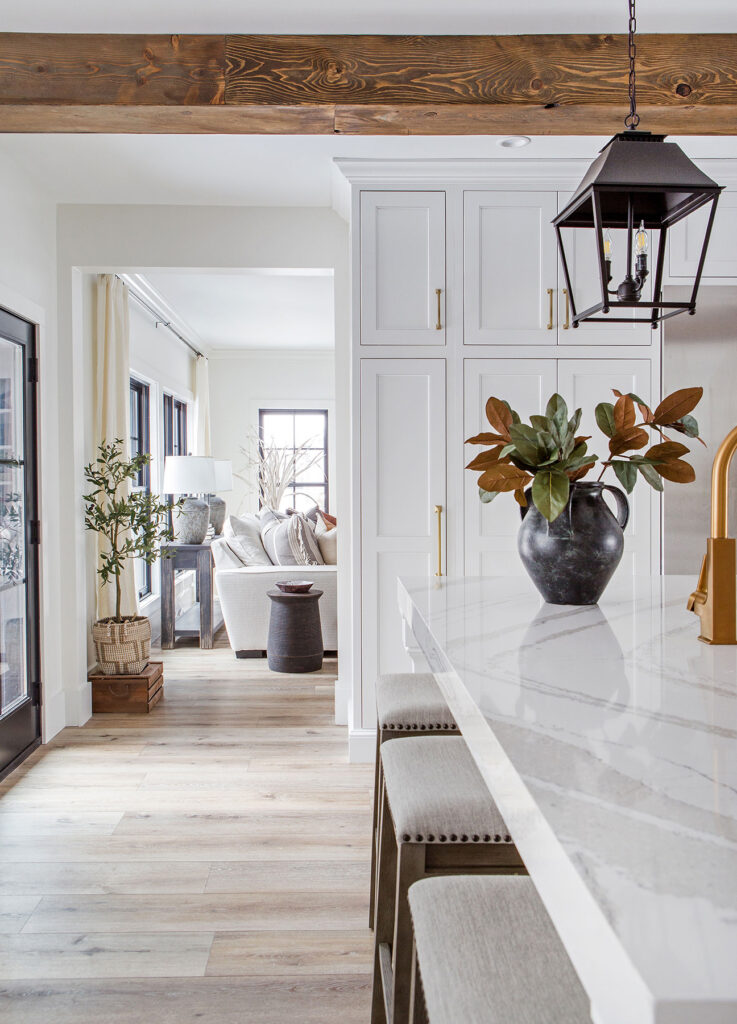How to Add Faux Beams to Any Area of Your Home
Exposed beams have a timeless and rustic charm that adds character and warmth to any space. However, incorporating real wood beams into your home can be a costly and labor-intensive project. Fortunately, there is a fantastic alternative – faux beams. These lightweight and easy-to-install beams can mimic the look of real wood without the hefty price tag. If you’re looking to add the allure of exposed beams to any area of your home, here’s a step-by-step guide on how to do it using faux beams.

What you’ll need:
- Faux Beams: Purchase the faux beams of your choice. They are available in various materials such as polyurethane, high-density foam, and lightweight real wood.
- Mounting Blocks: These blocks act as anchors for the faux beams and provide additional support. Make sure they are compatible with the type of faux beams you are using.
- Wooden Rails: These will create the base for your faux beams and provide a sturdy foundation for installation.
- Screws and Nails: Choose appropriate screws or nails to secure the mounting blocks, wooden rails, and faux beams to each other and the ceiling.
- Adhesive: Depending on the type of faux beams and the installation method, you may need adhesive to attach the beams to the mounting blocks or wooden rails.
- Level and Measuring Tape: These tools are essential for ensuring accurate measurements and achieving a level installation.
- Stud Finder: Use a stud finder to locate the ceiling joists for secure mounting of the wooden rails and mounting blocks.
- Drill and Screwdriver: These tools will be necessary for drilling pilot holes and driving screws into the mounting blocks and rails.
- Caulk: To fill any gaps between the faux beams and the ceiling or wall, use caulk for a seamless finish.
- Saw: Depending on the length and size of the faux beams, you may need a saw to cut them to the desired length.
- Safety Gear: Wear appropriate safety gear, such as safety goggles and gloves, while handling materials and using tools.
Step 1: Determine the Room Layout
Before you begin adding faux beams to your home, decide on the layout and placement of the beams. Consider the dimensions and shape of the room, and visualize where the beams will fit best. This initial planning will help you create a balanced and visually appealing design.
Step 2: Locate the Ceiling Joists
For a secure and stable installation, it’s crucial to locate the ceiling joists. You can use a stud finder or gently tap the ceiling with a hammer to identify the solid areas where the joists are located. Mark these spots as they will serve as the anchor points for your faux beams.
Step 3: Measure and Mark the Beam Location
Measure the distance between the ceiling joists to determine the length of your faux beams. Mark the positions of the beams on the ceiling, ensuring they are evenly spaced and aligned with your room layout plan.
Step 4: Cut and Install the Rails
To create the base for your faux beams, cut wooden rails to the appropriate length and attach them to the ceiling joists. These rails will act as support for the beams and provide a solid foundation for the installation.
Step 5: Cut and Install Your Beams
Now it’s time to work with the faux beams themselves. Cut the beams to the desired length, ensuring they fit snugly between the wooden rails. Secure the beams to the rails using screws or adhesive, following the manufacturer’s guidelines for installation.
Step 6: Enjoy Your New Beams
With the faux beams securely installed, step back and admire the transformation of your space. The addition of faux beams will instantly elevate the aesthetics of your home, adding character and warmth to the area. Enjoy the cozy and inviting ambiance they bring to your living space.
Frequently Asked Questions
Why use faux beams instead of real wood?
There are several reasons why people choose to use faux beams instead of real wood:
- Cost-Effective: Faux beams are typically more affordable than real wood beams. They provide the look of real wood without the high cost associated with sourcing and installing authentic wooden beams.
- Lightweight: Faux beams are lightweight compared to real wood beams, which makes them easier to handle and install. This is especially beneficial for DIY projects.
- Easy to Install: Installing faux beams is often a straightforward process that requires minimal tools and expertise. In contrast, real wood beams may need professional installation due to their weight and structural considerations.
- Versatility: Faux beams come in a wide variety of materials, finishes, and styles. This versatility allows homeowners to choose beams that best match their interior design and decor preferences.
- Maintenance-Free: Unlike real wood, faux beams do not require regular maintenance, such as staining or sealing, to maintain their appearance. They are resistant to rot, insects, and warping, making them a low-maintenance option.
Do faux beams last and hold up well?
Yes, faux beams are designed to be durable and long-lasting. When properly installed and cared for, they can hold up well over time. The longevity of faux beams depends on the quality of the material used, the installation process, and the environmental conditions they are exposed to.
Faux beams made from high-quality materials like polyurethane or high-density foam are resistant to moisture, decay, and pests, ensuring they remain in excellent condition for years. They won’t warp, crack, or split like real wood beams, making them ideal for areas with varying humidity levels.
Proper installation is crucial to ensure the faux beams stay securely in place. Using sturdy mounting blocks and following manufacturer guidelines for installation will contribute to their durability.
Additionally, faux beams are not susceptible to fading or discoloration from exposure to sunlight, ensuring that they maintain their appearance over time.
Overall, faux beams can last for many years and provide an attractive and long-lasting alternative to real wood beams, making them a popular choice for homeowners looking to add the charm of exposed beams to their spaces without the maintenance and cost associated with real wood.





